Click on images to enlarge
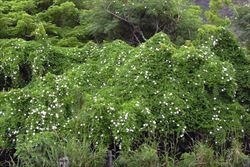
infestation (Photo: Forest and Kim Starr, USGS)

climbing habit (Photo: Sheldon Navie)
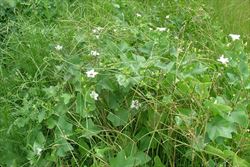
scrambling habit (Photo: Sheldon Navie)

leaves and tendrils (Photo: Sheldon Navie)
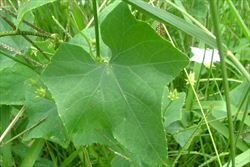
close-up of leaf with slightly-lobed margins (Photo: Sheldon Navie)
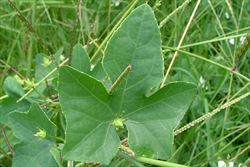
leaf with more deeply-lobed margins (Photo: Sheldon Navie)
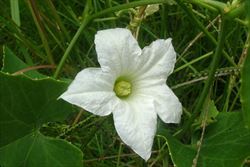
male flower (Photo: Sheldon Navie)
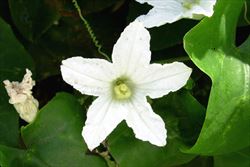
female flower (Photo: Chris Gardiner)
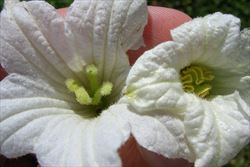
close-up of female flower, on the left, and male flower, on the right (Photo: Forest and Kim Starr, USGS)
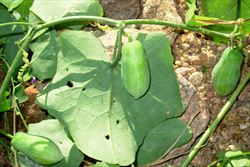
stems, leaf undersides and immature fruit (Photo: Chris Gardiner)
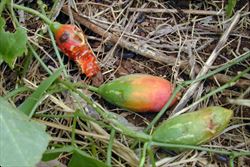
mature fruit (Photo: Forest and Kim Starr, USGS)
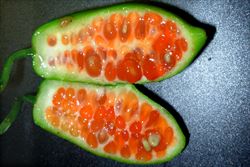
close-up of mature fruit cut open to show scarlet-coloured flesh containing numerous seeds (Photo: Chris Gardiner)
Scientific Name
Coccinia grandis (L.) Voigt
Synonyms
Bryonia grandis L.Coccinia cordifolia (L.) Cogn. (misapplied)
Family
Cucurbitaceae
Common Names
ivy gourd, little gourd, scarlet fruited gourd, scarlet gourd, scarlet-fruited gourd
Origin
Native to tropical Africa (i.e. Chad, Ethiopia, Somalia, Sudan, Kenya, Tanzania, Uganda, Central African Republic, Ivory Coast, Gambia, Ghana, Guinea-Bissau, Mali, Nigeria, Senegal, Sierra Leone and Togo), China, the Indian Sub-continent (i.e. India, Pakistan and Sri Lanka), south-eastern Asia (i.e. Cambodia, Laos, Myanmar, Thailand, Vietnam, Indonesia, Malaysia, the Philippines and Papua New Guinea), Fiji and also some parts of northern Australia (i.e. it is thought to be native to the northern parts of the Northern Territory).
Naturalised Distribution
Naturalised in northern Queensland and in the coastal districts of northern Western Australia (e.g. Broome, South Hedland and Arnhem Land). Possibly also naturalised, or naturalised beyond its native range, in the Northern Territory.
Notes
This very aggressive smothering vine is regarded as being native to some parts of the Northern Territory. However, it is invasive in other parts of the world and it thought to pose a threat to the environment in many parts of Australia beyond its native range (i.e. in the monsoon zone of northern Australia and the tropical and sub-tropical humid zones of coastal Queensland and northern New South Wales).
Ivy gourd (Coccinia grandis) could infest the dry rainforests of the monsoon zone, the tropical and sub-tropical rainforests of the humid coastal zones, and riparian vegetation in these and other locations. This species is already a significant environmental weed in Hawaii, where it smothers remnant native vegetation. It climbs and envelops shrubs and trees, forming a dense canopy that impedes light penetration and prevents the growth and regeneration of native plants. It has also become invasive in Guam and Saipan, and is listed in the Global Invasive Species Database.

